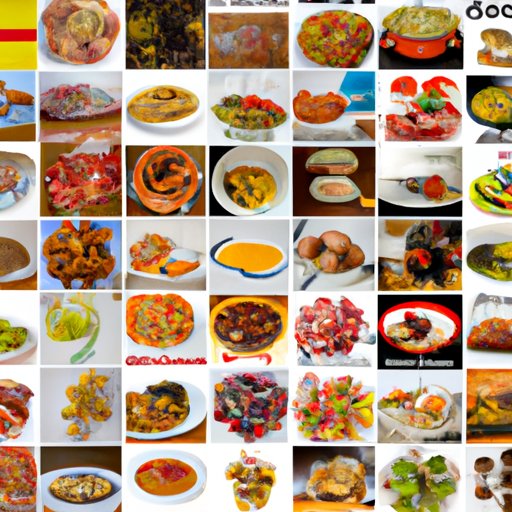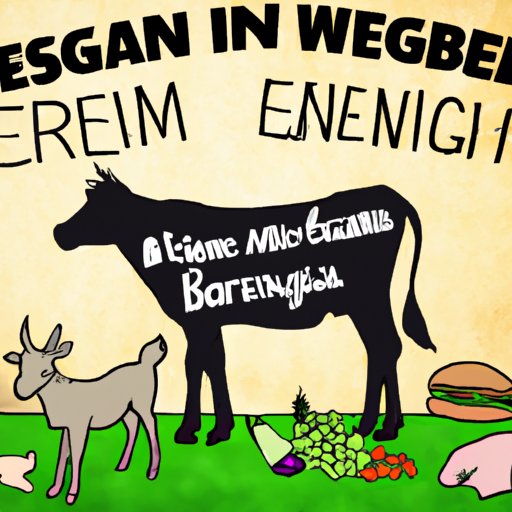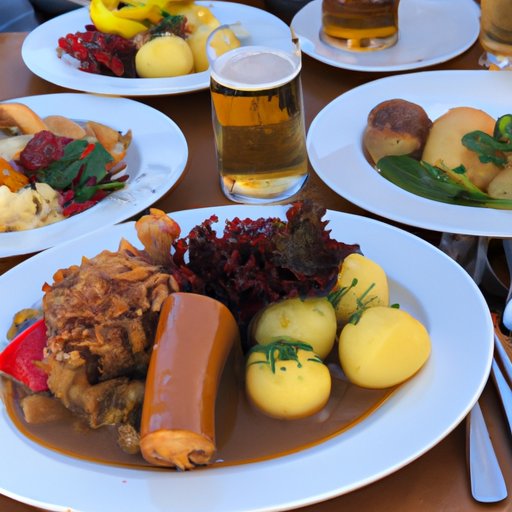Introduction
German cuisine is a reflection of the country’s diverse landscape and culture. With influences from all over Europe, it is a unique blend of traditional recipes, regional specialties, and modern interpretations. From hearty sausages to creamy cakes, Germany offers a wealth of delicious dishes for visitors and locals alike.
Definition of German Cuisine
German cuisine is known for its variety, with each region having its own distinctive twist on classic dishes. It is primarily based on hearty ingredients such as potatoes, bread, meat, and fish, as well as vegetables, fruits, and herbs. Common ingredients include pork, beef, chicken, cabbage, mushrooms, onions, apples, pears, and rye bread. German cuisine also includes a range of sweet treats such as cakes, cookies, and chocolates.

Overview of Popular Dishes and Regional Specialities
Popular dishes in Germany include schnitzel, bratwurst, rouladen, spaetzle, sauerbraten, and potato pancakes. Regional specialties vary from Bavarian pretzels to Berliner doughnuts. Other popular dishes include spätzle, a type of egg noodle, and schupfnudeln, a type of dumpling. In the south, particularly in Bavaria, dishes are often served with sauerkraut or potato salad, while in the north they are more likely to be served with mashed potatoes.
Traditional Meals, Regional Influences, and Modern Adaptations
Overview of Classic German Dishes
Schnitzel is one of the most famous dishes in Germany. It is usually made with veal, pork, or chicken that has been pounded thin and then fried. Bratwurst is another popular dish, consisting of pork sausage served either grilled or boiled. Rouladen is a rolled beef dish filled with bacon, onion, and pickles. Spaetzle is a type of egg noodle that is served with a variety of sauces. And sauerbraten is a pot roast marinated in vinegar and spices.
Regional Variations in German Cuisine
Each region of Germany has its own unique take on classic dishes. For example, in Bavaria, pork dishes are often served with sauerkraut or potato salad. In the north, they are more likely to be served with mashed potatoes. The Black Forest region is known for its Käsespätzle, a type of cheese-filled egg noodle. And in Rhineland-Palatinate, a type of flatbread called Flammkuchen is popular.
Contemporary Takes on German Cuisine
In recent years, there has been an increase in the number of contemporary German restaurants serving modern takes on traditional dishes. These restaurants often combine regional ingredients with global flavors, creating exciting new dishes. Some of these restaurants are even experimenting with vegetarian and vegan versions of classic German dishes.
Everyday Eating Habits in Germany
Examining Breakfast Options
Breakfast is an important meal in Germany and typically consists of bread, cold cuts, cheeses, eggs, and coffee. Bread is usually served with butter, jam, or honey. For a heartier breakfast, some people enjoy a Brezel (pretzel) or a Krapfen (doughnut). Many Germans also enjoy a glass of freshly squeezed juice or a cup of hot chocolate.
Exploring Lunch and Dinner Menus
Lunch and dinner menus in Germany typically consist of one or two main dishes, such as schnitzel, bratwurst, or rouladen. Side dishes may include potatoes, salads, and vegetables. Desserts are often seasonal fruit, such as apples or pears. Beer is a popular beverage choice and can be enjoyed with almost any meal.
Exploring German Food Culture
Beer Gardens and Other Traditional Eating Outlets
Germany is known for its beer gardens, which are outdoor areas where people can gather to drink beer and eat traditional German food. They are usually located in parks or gardens and offer a relaxed atmosphere for socializing. Other traditional eating outlets include Wurststuben (sausage stalls) and Bierhallen (beer halls).
Gourmet Restaurants and Fine Dining
For those looking for a more upscale dining experience, there is no shortage of gourmet restaurants and fine dining establishments in Germany. These restaurants often specialize in regional dishes, such as Bavarian cuisine or Rhineland-Palatinate delicacies. Many of these restaurants also serve international dishes, such as Italian pastas or French desserts.

The Rise of Veganism in Germany
Plant-Based Diets Becoming More Popular
In recent years, veganism has become increasingly popular in Germany. According to a survey by the Vegetarian Association, 5% of Germans identify as vegan, and 10% follow a plant-based diet. This trend is driven by growing awareness of the environmental and health benefits of plant-based diets.
How This is Changing German Eating Habits
The rise of veganism is having a significant impact on German eating habits. More and more restaurants are offering vegan options, and vegan versions of classic dishes such as schnitzel and bratwurst are becoming increasingly common. There has also been an increase in the number of vegan grocery stores and food delivery services in Germany.
Conclusion
German cuisine is a reflection of the country’s diverse culture and landscape. From hearty sausages to creamy cakes, it offers a wealth of delicious dishes for visitors and locals alike. Traditional meals have evolved over time to include regional variations, as well as modern adaptations. Everyday eating habits in Germany are changing, with the rise of veganism influencing menus across the country. From beer gardens to gourmet restaurants, there is something for everyone in Germany’s vibrant food culture.
(Note: Is this article not meeting your expectations? Do you have knowledge or insights to share? Unlock new opportunities and expand your reach by joining our authors team. Click Registration to join us and share your expertise with our readers.)
